Set up an Okta connector
Availability
✅ General availability. The Okta connector is available to all ConductorOne users.
Capabilities
Sync user identities from Okta to ConductorOne
Promote identities from application users to ConductorOne users
Resources supported:
- Groups
- Org roles (requires a super admin token)
- Application assignments
Provisioning supported:
- Group membership
- Application assignment
Depending on the permissions of the Okta API Token, ConductorOne has different functionality that it can provide. See the next section for more information.
API token permissions and ConductorOne capabilities
ConductorOne’s capabilities depend on the permissions of the API token used to set up the connector:
| ConductorOne capability | Read-only admin token | Read-only + app admin + group admin token | Super admin token |
|---|---|---|---|
| Review group membership | ✅ | ✅ | ✅ |
| Provision group membership | ✅ | ✅ | |
| Review application assignment | ✅ | ✅ | ✅ |
| Provision application assignment | ✅ | ✅ | |
| Review Okta roles | ✅ |
Add a new Okta connector
This task requires either the Connector Administrator or Super Administrator role in ConductorOne.
In ConductorOne, open Admin and click Connectors > Add connector.
Search for Okta and click Add.
Choose whether to add the new Okta connector as a data source to an existing application (and select the app of your choice) or to create a new application.
Set the owner for this connector. You can manage the connector yourself, or choose someone else from the list of ConductorOne users. Setting multiple owners is allowed.
A Okta connector owner must have the following permissions:
- Connector Administrator or Super Administrator role in ConductorOne
- Read Only Admin or Super Admin role in Okta
- Click Next.
Next steps
If you are the connector owner, proceed to Configure your Okta connector for instructions on integrating Okta with ConductorOne.
If someone else is the connector owner, ConductorOne will notify them by email that their help is needed to complete the setup process.
Configure your Okta connector
A user with the Connector Administrator or Super Administrator role in ConductorOne and Read Only Admin or Super Admin role in Okta must perform this task.
You can skip Steps 1 and 2 and proceed to Step 3 if you already have an API token generated with Super Admin, Read Only Admin or a combination of Read Only/App Admin/Group Admin privileges. To learn more about Okta roles, visit https://help.okta.com/en/prod/Content/Topics/Security/administrators-admin-comparison.htm
(Optional) Step 1: Create a service account for the API token
If desired, you can create a service account user in Okta that has the permissions for the API token.
Navigate to Directory > People and click Add person.
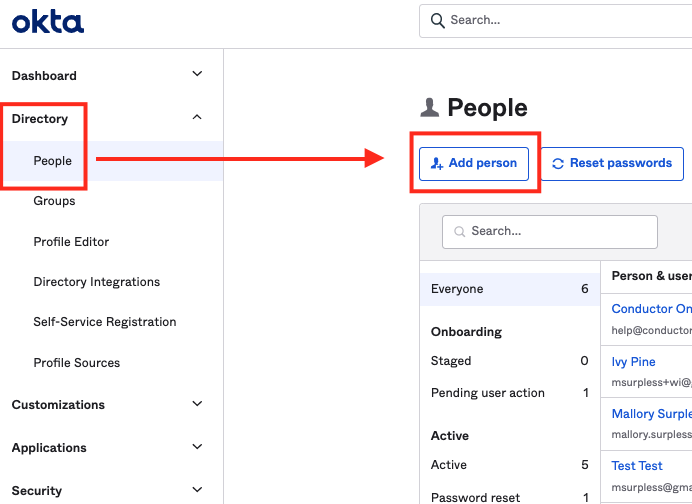
Enter the necessary user details to create a user. You might want to use identifiers that make it easily recognizable as a service account, such as First Name: ReadOnly, Last Name: ServiceUser.
Set the Password for the account and store it securely in a vault.
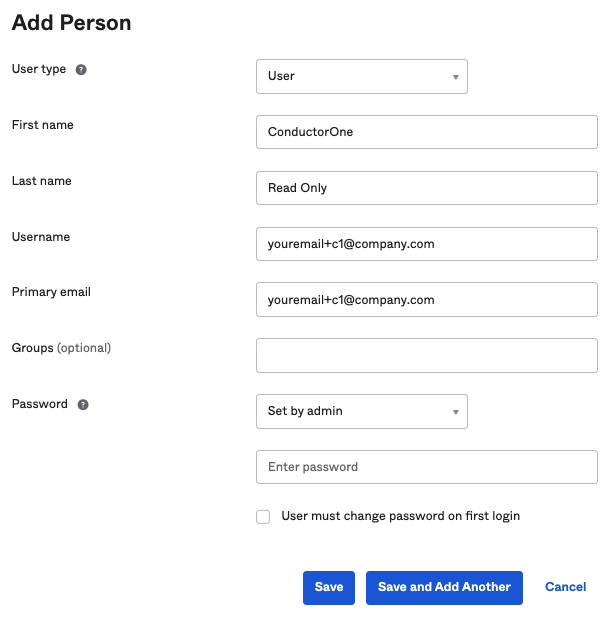
Navigate to Security > Administrator and click Add administrator.
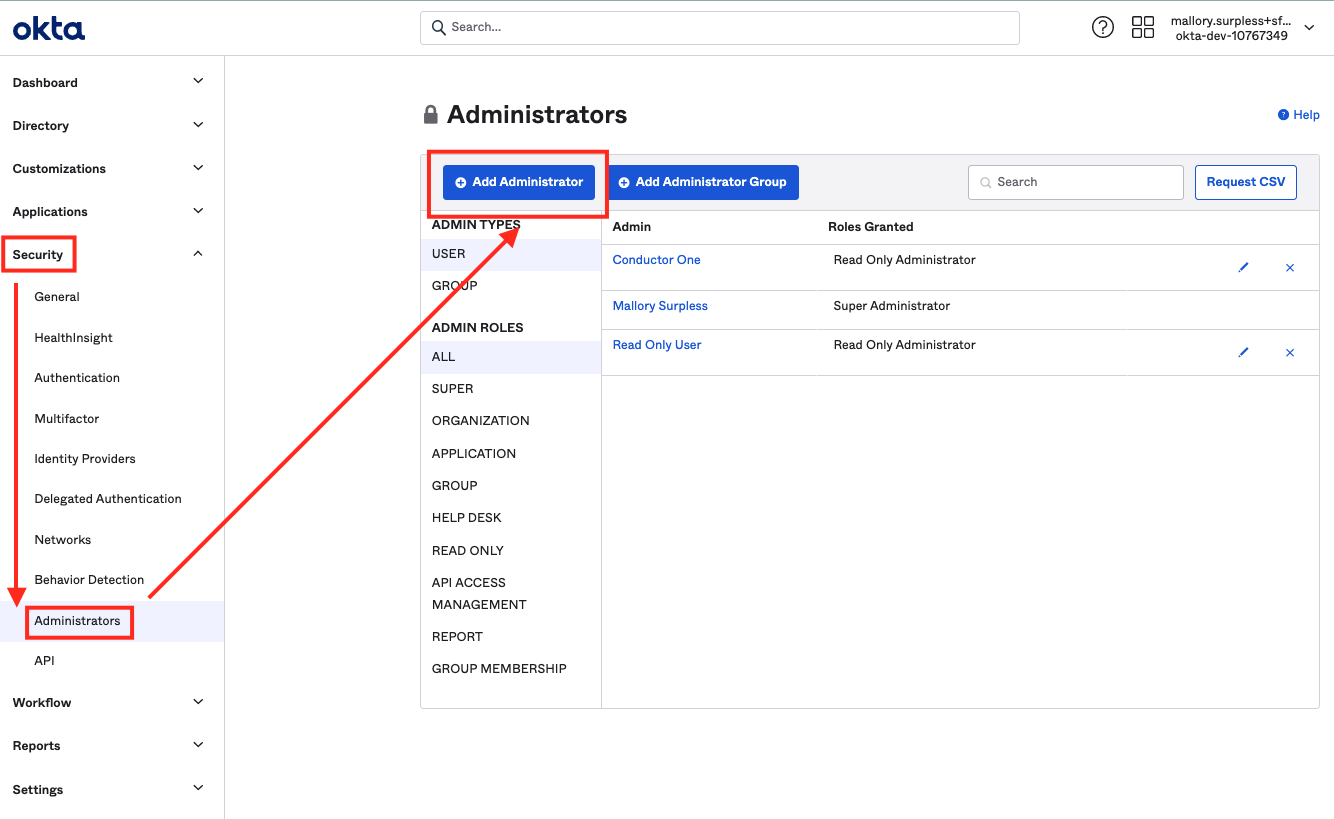
Enter the email address for your newly created Service Account to select the user.
Select the administrator roles to grant: Read Only Admin, Super Administrator, or a combination of Read Only + Application Admin + Group Admin.
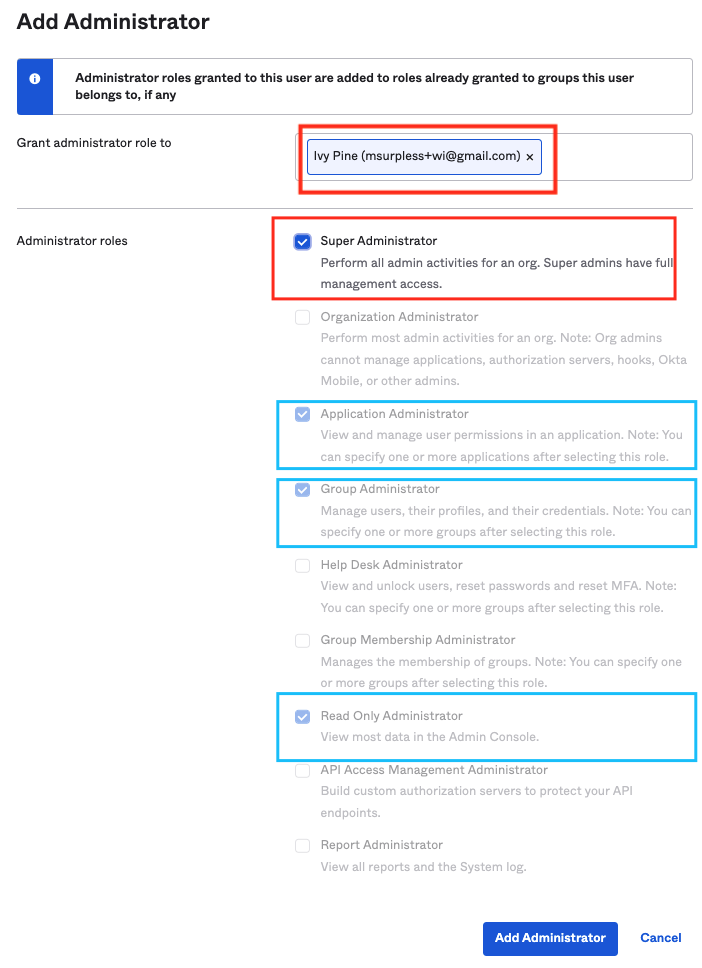
Click Add Administrator.
Step 2: Create an API token
When creating an API token, Okta assigns the permissions of the currently logged-in user to the token. If, for example, you wish to use a Read Only Admin-scoped API token, you must log in to Okta as a user with the Read Only Admin role assigned.
Log into Okta with the account you’ll use to generate the API token. The account must have Read Only Administrator, Super Administrator, or a combination of Read Only/App Admin/Group Admin privileges. The permissions on the API token affects what features and functionality are available from ConductorOne. Before you begin, review the chart in API permissions and ConductorOne capabilities to make sure you’re creating a token with the right permissions for your needs.
In the Okta console, navigate to Security > API and click Tokens.
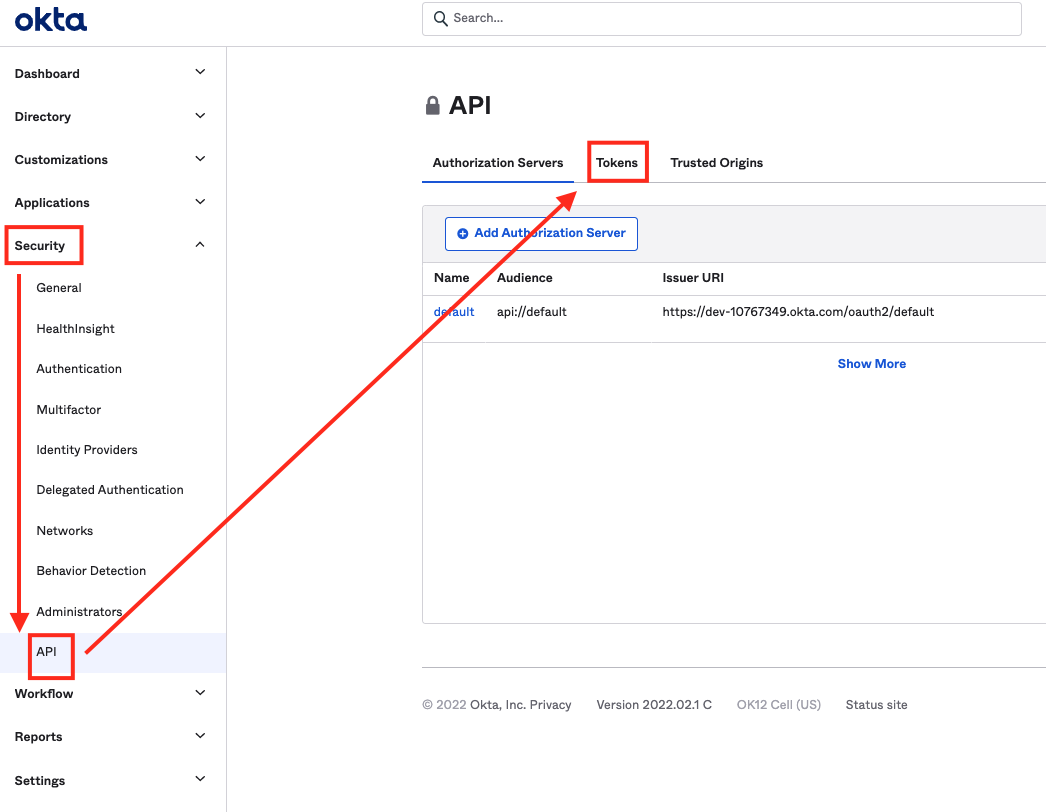
Click Create Token.
Give your token a name, such as ConductorOne and click Create Token.
Copy and save the new API token.
Step 3: Add your Okta credentials to ConductorOne
In ConductorOne, navigate to the Okta connector by either:
Clicking the Set up connector link in the email you received about configuring the connector.
Navigate to Admin > Connectors > Okta (if there is more than one Okta listed, click the one with your name listed as owner and the status Not connected).
Find the Settings area of the page and click Edit.
Enter your Okta domain (the URL of your Okta instance is
<YOUR DOMAIN>.okta.com) into the Okta domain field.Paste your API token into the API key field.
Optional. If you want ConductorOne to skip syncing inactive child apps, or to sync deprovisioned users, click the checkboxes accordingly.
Click Save.
The connector’s label changes to Syncing, followed by Connected. You can view the logs to ensure that information is syncing.
That’s it! Your Okta connector is now pulling access data into ConductorOne.
What’s next?
If Okta is your company’s identity provider (meaning that it is used to SSO into other software), the connector sync will automatically create applications in ConductorOne for all of your SCIMed software. Before you move on, review the Create applications page for important information about how to set up connectors for the SCIMed apps.
Configure the Okta integration using Terraform
As an alternative to the integration process described above, you can use Terraform to configure the integration between Okta and ConductorOne.
See the ConductorOne Okta integration resource page in the ConductorOne Terraform registry for example usage and the full list of required and optional parameters.